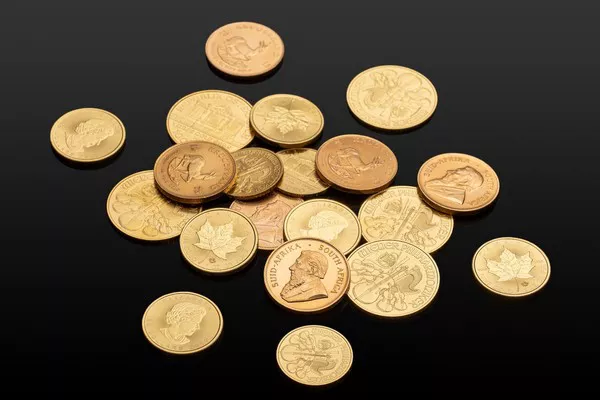After a challenging May, the NewGold Exchange Traded Fund (ETF) listed on the Ghana Stock Exchange (GSE) is showing signs of recovery, driven by a sharp rally in global gold prices at the start of June 2025.
Spot gold prices surged more than 2% on Monday to US$3,372.13 per ounce—the highest in three weeks—as geopolitical tensions in the Middle East and a weakening US dollar reignited safe-haven demand. The rally reversed a 2.3% week-on-week decline on the Commodity Exchange (COMEX), where gold had closed at US$3,312.10 the previous week.
The rebound in gold prices has offered much-needed relief to NewGold ETF holders. The fund, which tracks the price of physical gold, had fallen 6.09% last week to close at GH¢350.86, reflecting the late-May dip in global bullion prices. Average daily trades dropped 16.78% to 4,750 units, while total weekly turnover declined 24.5% to GH¢8.25 million.
Cautious Optimism Amid Market Uncertainty
According to Databank Research, “The disconnect between earlier safe-haven flows and late-week technical selling suggests domestic allocators remain tactically cautious, awaiting clearer signals on inflation and central-bank policy direction.”
The gold outlook remains tightly linked to US economic data, particularly inflation indicators and future Federal Reserve policy moves. Last week’s mixed Personal Consumption Expenditures (PCE) data reduced hopes for immediate rate cuts. However, the US dollar’s 0.5% decline against major currencies on Monday shifted sentiment back in favor of gold.
NewGold ETF’s Performance and Market Standing
Despite the recent uptick, the NewGold ETF is down 10.2% year-to-date. It began 2025 at GH¢390.50 and peaked at GH¢508.31 on April 22 before entering a decline. The ETF currently ranks in the bottom 20% of the GSE in year-to-date performance. Still, with a market capitalisation of GH¢1.02 billion, it remains the 17th most valuable stock on the exchange, representing about 0.76% of the GSE’s total equity market.
The fund offers investors exposure to gold through units representing one-tenth of a gram of the physical metal, stored in London Bullion Market Association-approved vaults. It serves as a hedge against currency volatility, inflation, and global financial instability—factors gaining prominence in the current macroeconomic environment.
Currency Dynamics and Local Sentiment
The Ghanaian cedi (GH¢) has also played a role in shaping NewGold’s performance. Last week, the cedi was the best-performing currency on the interbank market, appreciating 6.52% against the US dollar to close at a mid-rate of GH¢10.95/US$.
“Should offshore investors continue to repatriate profits or if import demand accelerates, the cedi could face renewed depreciation pressure,” Databank noted. A cedi depreciation beyond GH¢11.30/US$ would likely boost demand for the gold-backed ETF as a currency hedge.
Global Demand and Central Bank Support
While sentiment-driven flows and central bank purchases continue to support gold, physical demand in Asia has shown signs of softening. In India, demand weakened after the wedding season and as local prices climbed, pushing wholesale premiums down from US$49 to US$31. In China, Shanghai Gold Exchange premiums narrowed to US$15 amid local oversupply.
In Ghana, however, the Bank of Ghana has ramped up its gold reserves as part of its Domestic Gold Purchase Programme. As of end-April 2025, reserves had surged to 31.37 tonnes (approximately 1,008,837 ounces) valued at around GH¢46.3 billion—up from 8.78 tonnes in 2023.
Market Outlook
Investors are now focused on upcoming US economic data and comments from Federal Reserve officials, particularly around core PCE inflation. A reading below 2.2% could ease pressure on real yields and reignite interest in gold and gold-backed instruments.
Meanwhile, the broader GSE continues to show strength, with the Composite Index starting June 2025 up 25.81% year-to-date, signaling growing investor confidence across the local market.


